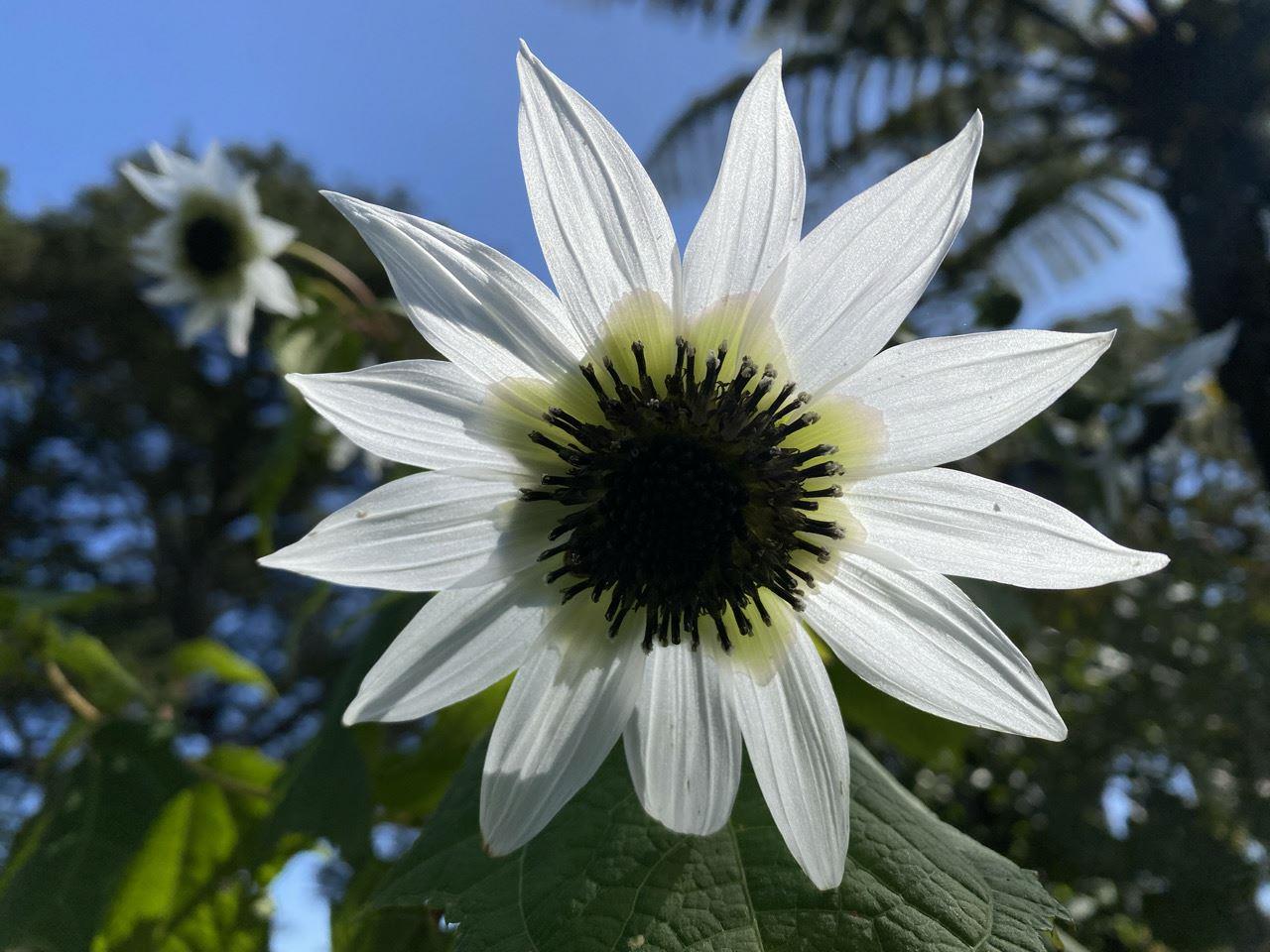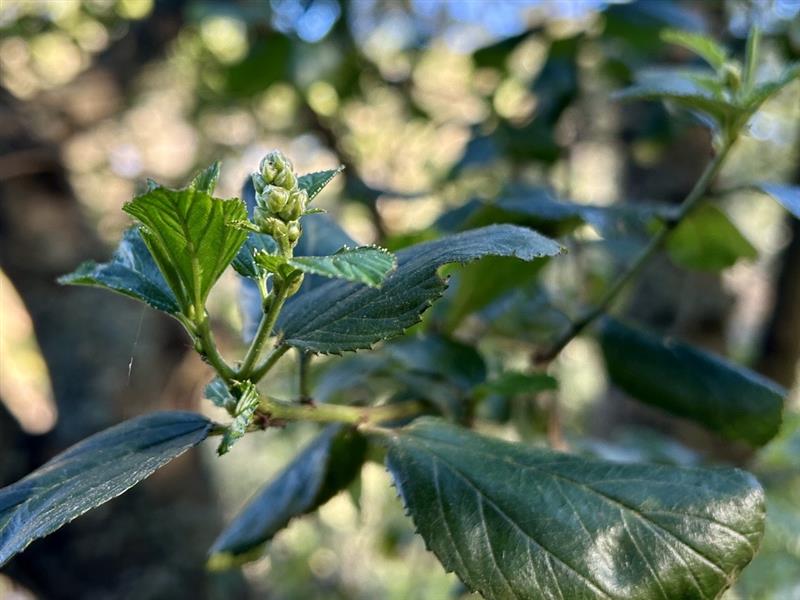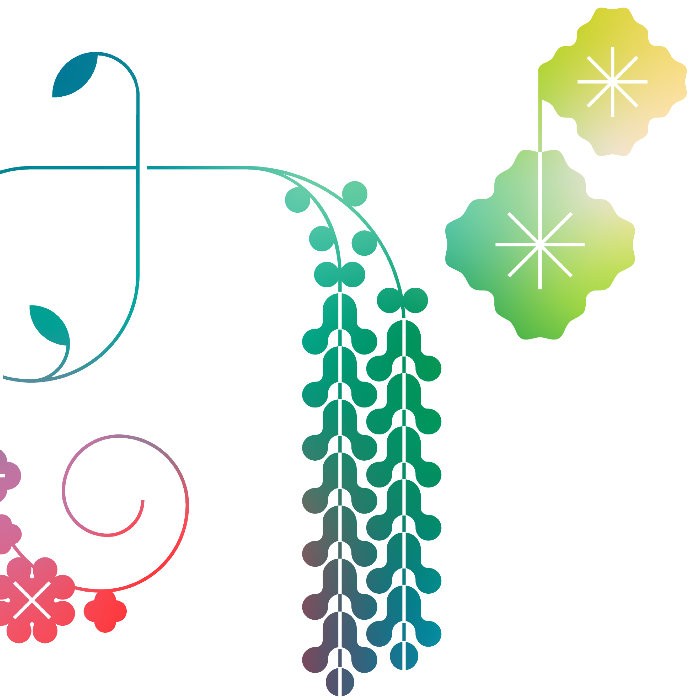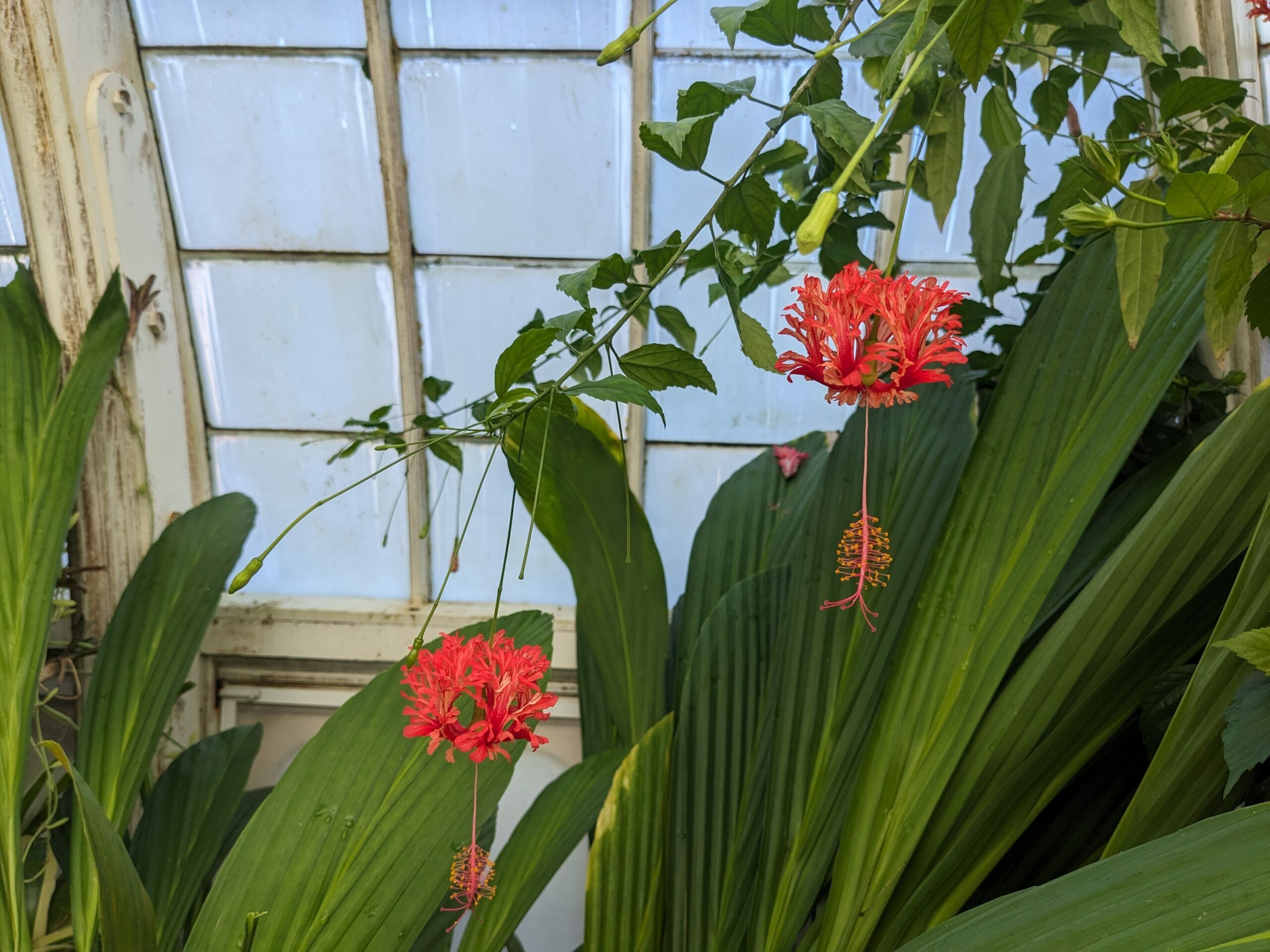
Curator’s Corner – Japanese lantern (Hibiscus schizopetalus)
This vividly colorful plant, which is native to East Africa, blooms intermittently in the Aquatic Plants Gallery of the Conservatory of Flowers.
Profile
Scientific name: Hibiscus schizopetalus
Family: Malvaceae
Plant type: Broadleaf evergreen shrub
Environment: Full sun, copious moisture, rich well-drained soil
Bloom: Bright red flowers, or streaked red and pink flowers, with frilly petals
Uses: Ornamental
Hibiscus schizopetalus goes by many names, which makes sense since this colorful tropical hibiscus has so many unique features. Depending on who you talk to, this flowering plant might be referred to as fringed hibiscus, spider hibiscus, skeleton hibiscus, coral hibiscus, Japanese lantern, or even the whimsical sounding fringed rosemallow. Hibiscus schizopetalus is native to East Africa, specifically to the nations of Kenya and Tanzania where it is often found in deciduous coastal bushlands, and we are proud to feature its beautiful flowers at the Conservatory of Flowers in the Aquatic Plants Gallery.
Its specific epithet, schizopetalus, is a fantastic descriptor of the plant itself, with the root word schizo meaning split, or parted, and petalus meaning — you guessed it — petals. Schizopetalus, or split petals.
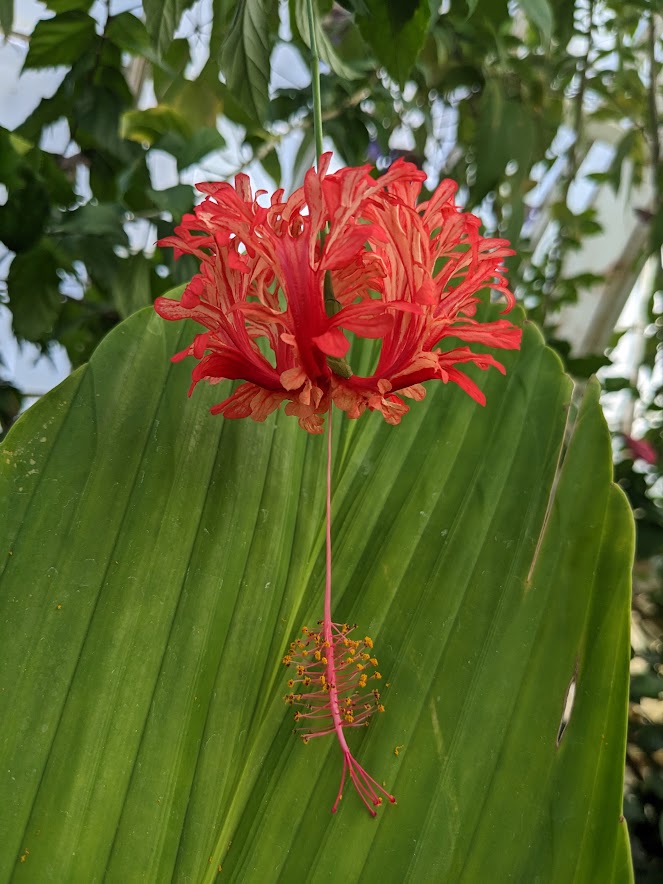
This plant is often cultivated as an ornamental showpiece in gardens all around the world.
This plant’s flowers are its most noticeable feature, and the reason why it is so often cultivated as an ornamental showpiece in gardens all around the world. Its colors, though varied, are always vivid, standing out from the plant’s dark green, serrate, ovate leaves; sometimes the petals are bright red, sometimes salmon, and sometimes streaked with pink. The flowers dangle downward from delicate stems, with its frilly, finely divided petals curving upwards into a spheroid shape reminiscent of traditional East Asian paper lanterns. From the center of the flower protrudes a long, slender reproductive column colored just as vividly as the petals above. The tip of this column is covered in stamens, producing pollen that is disseminated by all kinds of pollinators, such as bees, butterflies, and hummingbirds.
Hibiscus schizopetalus can be seen blooming intermittently in the Conservatory of Flowers’ Aquatic Plants Gallery, which provides ideal warm, moist, and well-lit growing conditions. Due to the mild Mediterranean climate of San Francisco, anyone who plans on cultivating this plant should do so with great care. Water daily in warmer months, ensure it remains in full sun, and try to maintain temperatures above 55-65 degrees Fahrenheit. Hibiscus schizopetalus, though known for its flowers, is a woody, evergreen shrub that can naturally grow 6-9 feet tall and spread 5-6 feet, so it is necessary to provide the plant with sufficient area to grow. Unlike its relative, Hibiscus rosa–sinensis, Hibiscus schizopetalus blooms better if left unpruned, or pruned sparingly every 3-4 years.
Text by Ethan Rappeport, photos from Tory Stewart and Sarah Sawtelle


